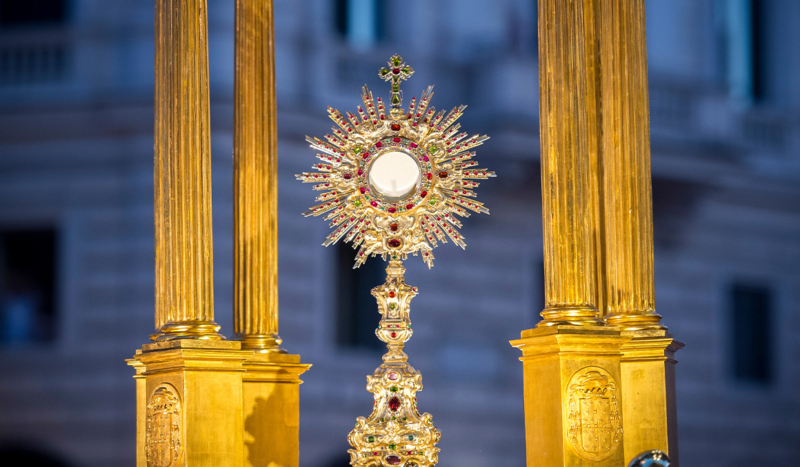
CV NEWS FEED // The second day of the United States Conference of Catholic Bishops’ 2024 Plenary Assembly featured updates on several different topics, including statistics on the National Eucharistic Congress, visas for priests from other countries, and the beatification of a visionary from Wisconsin.
Adele Brise
Bishop Thomas J. Paprocki of Springfield, chairman of the Committee on Canonical Affairs and Church Governance, requested a consultation with his fellow bishops regarding the beatification and canonization of Adele Brise, a 19th-century catechist from Champion, Wisconsin who witnessed several Marian apparitions.
Bishop Paprocki said that three consultations must be undertaken before opening a cause for canonization—a consultation with the faithful, the Holy See, and other bishops. He added that the cause to beatify a Marian visionary has national significance, as the Immaculate Conception is the patroness of the United States.
Bishop David L. Ricken of Green Bay, who opened a formal investigation into the Marian apparitions in 2009 and declared them “worthy of belief” in 2010, offered brief details of Brise’s life.
The bishops then held a vocal vote on opening Brise’s cause for canonization, ultimately deciding to proceed with the process.
Visas for Immigrant Priests
Bishop Mark J. Seitz of El Paso, chairman of the Committee on Migration, informed the bishops that a non-U.S. citizen priest applying for a green card can be forced to wait 15 years before obtaining a resident visa. A religious worker visa, known as the R1 visa, only lasts for five years, and holders must wait outside the U.S. for at least one year in between R1 visas.
“This is simply not sustainable for our ministries, and it is especially devastating for parishes that will be left without a pastor when he is forced to depart the country at the end of his R1 visa,” Bishop Seitz said. “This has already begun to happen in some of our dioceses.”
He said that the Committee has been petitioning the legislative and executive branches of government for solutions, with movement happening as the result of meetings with the White House, Department of State, and Department of Homeland Security.
“We were informed in December that a forthcoming regulation would shorten the time required outside the United States between R1 visas,” Bishop Seitz said. “If this change is made consistent with our recommendations, a priest or other religious worker would only need to be outside the country for a period of 30 days every five years before returning on a new R1 visa.”
“While this does not solve the inordinate wait time for a green card, it would largely nullify the burden posed by the present one year requirement,” he added.
The first step of introducing the regulation is not scheduled to occur until October, which prompted Bishop Seitz to ask his fellow bishops to contact their congressional delegations to quicken the process.
National Eucharistic Congress
Bishop Andrew Cozzens of Crookston, chairman of the board of the National Eucharistic Congress, Inc., shared statistics and updates on the National Eucharistic Pilgrimage and Congress with the bishops.
He said of the National Eucharistic Pilgrimage:
- At least 50,000 people have attended the various events of the Eucharistic Pilgrimage across the country
- The pilgrimages have paid visits to prisons, nursing homes, and homeless shelters along the routes
- The pilgrimages have begun to catch the attention of secular media, with the Pilgrimage getting about 400 media alerts per day
- The Pilgrimage website has been viewed 400,000 times in May alone
He also provided information on the National Eucharistic Congress:
- 40,000 five-day passes have been sold already—the Lucas Oil Stadium in Indianapolis only seats 50,000
- 2,000+ day passes have been sold, but that number continues to increase every week
- He expect to have a sold-out stadium on the weekend, July 20-21
- In total, the Congress will feature 28 Masses, 25 hours of communal prayer, 49 hours of confessions, 66 breakout sessions, 96 hours of continuous adoration at St. John the Evangelist Church, as 122 hours of formation experiences
- There will be a large Eucharistic procession on the afternoon of July 20
Bishop Cozzens stressed that the Eucharistic Revival is only two-thirds over, with Congress serving as a launching point for the last “Year of Mission,” focusing on evangelistic outreach.
He also added that he hopes the next National Eucharistic Congress will occur in 2033, in honor of the Year of Redemption.

